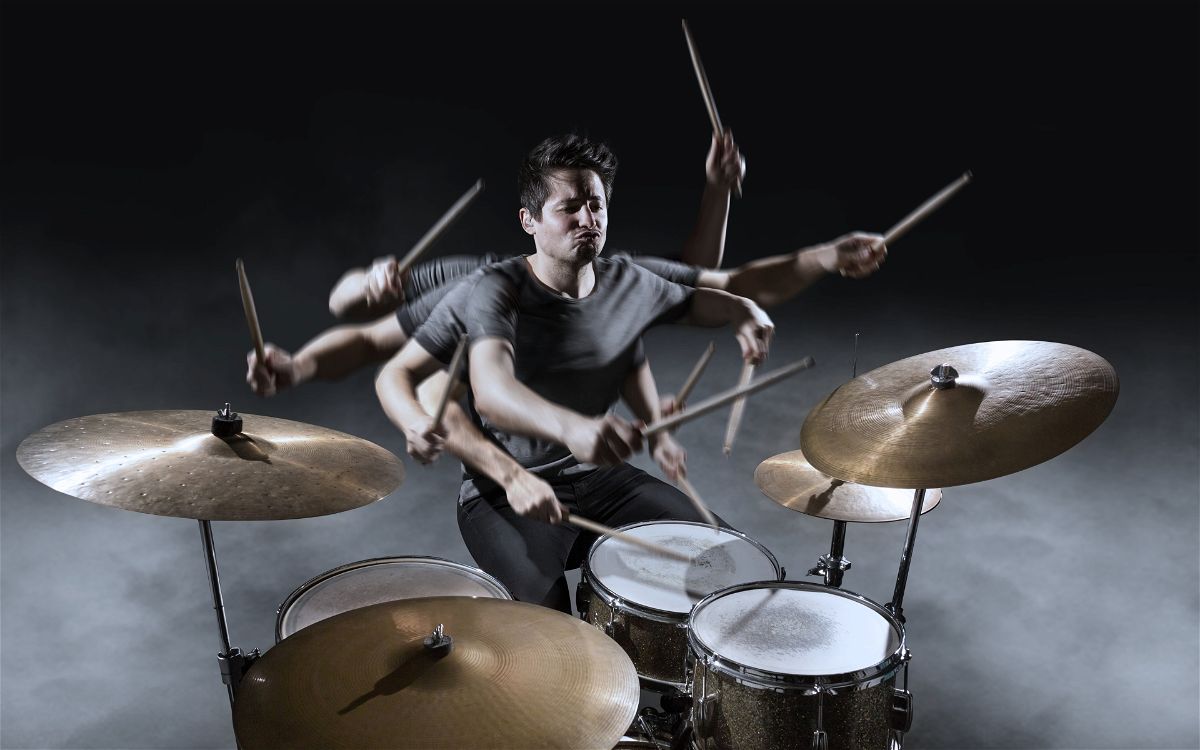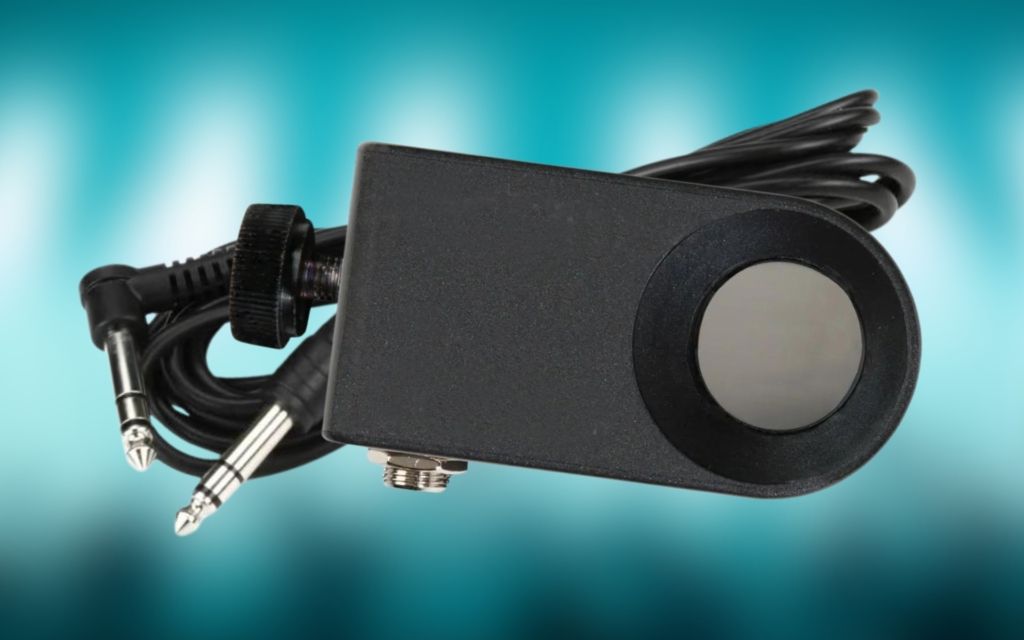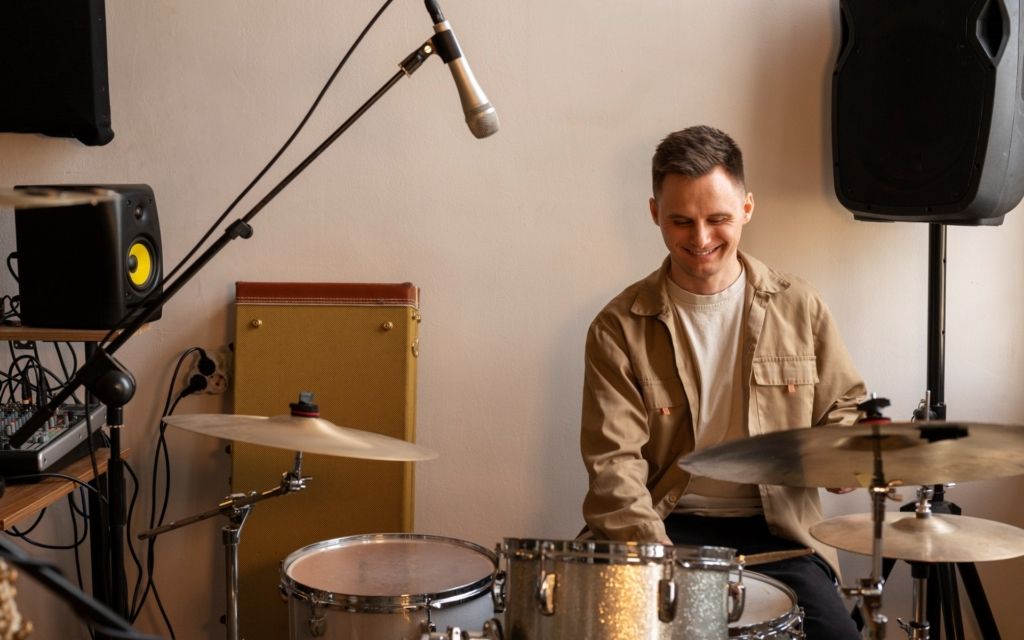While drumming speed shouldn’t be the main focus when learning, being able to play patterns quickly is quite important.
The faster you can play beats and fills, the more comfortable you’ll feel when playing them slower. So, working on your hand and foot speed is vital to improve as a drummer.
In this guide, I’m going to show you a few techniques to allow you to play faster. I’ll then list some exercises to work on your speed around the drum set.
Contents
Why is Technique Important?
The whole idea behind drumming techniques is that they allow you to get past the limitations of your body.
If you don’t use any solidly formed drum technique, your limbs will start to freeze up at certain tempos. It will be impossible to play faster than those tempos without moving your limbs in a certain way that is more optimal.
Having good technique will also stop you from getting hurt in the long run. If you try to play quick patterns on the drums with a stiff posture, you’re eventually going to develop a few injuries between your back, wrists, and legs.
So, technique is massively important. The cool thing about drumming is that there are a few different techniques to pick from, allowing you to go with whatever feels most comfortable for your body.
Once you utilize these techniques well, speed will become a lot easier to achieve.
Hand Techniques
Moeller Technique
The Moeller Technique is arguably the most popular technique to ever be created for drummers. It’s a hand technique that utilizes your full arms to get multiple strokes.
The basic form of this technique is to whip your arms up and down. For every single downward arm motion, you should get two or three more strokes when you lift your arm back up.
It’s a good idea to dramatize the movement when you first learn it, meaning that you move your arms with very wide motions. When you get used to it, those motions will become a lot smaller, but you’ll still get the benefit of playing multiple strokes.
This technique basically means that you get more strokes with less effort.
Push Pull Technique
The Push Pull Technique is another way of moving your hands to get more notes out with less effort. However, this one mostly utilizes your wrists instead of your arms like the Moeller Method.
With this technique, you’re going to play your first stroke with a downward motion and open your fingers. You’re then going to close your fingers to create an upward motion with the drumstick. This will give you two strokes from one movement.
Foot Techniques
Slide Technique
The Slide Technique is when you press your foot down on the middle of the bass drum pedal. As it rebounds up, you’re going to slide your foot toward the top of the pedal while applying pressure. This will lead to a second stroke.
It works best for drummers that play with their heels up, as your starting point of the Slide Technique will be with your toes in the middle of the pedal.
This movement allows you to play two quick consecutive notes on your bass drum. You can also use it to play three notes at a time, but it’s not something that works for playing multiple consecutive notes.
Heel Toe Technique
The Heel Toe Technique is an alternative to the Slide, but it’s more for drummers that prefer to play with their heels down on the kick drum pedal.
The motion will start by applying force to the pedal with your heel, which will produce the first bass drum stroke. You’ll then move the weight of your foot forward to your toes, leading to the second stroke.
This technique also leads to two easy consecutive notes. However, it’s a bit easier to utilize to play a steady stream of continuous strokes.
Exercises to Increase Hand Speed
Hand Exercise 1

This first exercise is a good one to get your hands warmed up. It’s also a prime example of a speed builder on the drums, as it has you switching between subdivisions.
It’s easier to get faster hands when you go from playing one subdivision and then switch to playing a quicker one. With this one, you’re going to play single strokes as 16th notes and then switch to playing 16th note triplets.
That pattern will keep looping, and you’ll find that the Moeller Method will be the best hand technique to use to nail those triplets at higher tempos.
Hand Exercise 2

Up next we have an endurance hand exercise. You’re going to play constant 16th notes, but you’ll play groups of four with each hand.
You’re also going to accent the first note in each group, which will force you to utilize a hand technique to get that louder note out.
This is an exercise that will quickly tense up your hands, so make sure to stay relaxed and only play tempos that you’re comfortable with. You can start pushing the tempo once you’re feeling very confident.
Hand Exercise 3

This final hand exercise will have you playing short bursts of single strokes. You’ll start with your right hand for the first group, and then you’ll move to playing your left hand on the second group. That will keep looping.
It’s easier to play faster when you do short bursts, so this is a fantastic exercise to really push the tempo higher than what you played in the previous exercises.
You can also stick to playing the entire bar with just your right hand leading the groups. You can then switch to leading with your left hand for the next bar.
Exercises to Increase Foot Speed
Foot Exercise 1

This first kick drum exercise is a classic endurance builder. You’re just going to play a constant stream of 16th notes with your bass drum pedal, with the idea being that you’re building strength with your foot.
You can use the Heel Toe Technique if you want, but a lot of drummers like to power through this one with straight strokes. Both work well!
Foot Exercise 2

Up next we have a really good exercise to work on performing the Slide or Heel Toe Techniques. While the goal is to build speed, this exercise is more for developing those techniques without worrying too much about speed.
Once you can play this very comfortably, you’ll be able to get a lot faster when playing other bass drum patterns. The cool thing about this exercise is that it’s really easy to play. You may just need to clap quarter notes with your hands to keep you in time.
Foot Exercise 3

The final foot exercise involves groups of burst rhythms. You’re going to play three quick notes in a row and leave a 16th note space before playing the next group.
This one is really tricky to play at quicker tempos, but it will allow you to play some really interesting patterns on the drums once you have it nailed down.
Exercises to Increase Hand and Foot Speed
Hand and Foot Exercise 1

Now is the time to start putting your hands and feet together. This first exercise is an iconic drum fill where you play two notes on your hands and then two with your foot.
To play this quickly, you need to use either the Slide or Heel Toe Technique. A common mistake that drummers make is that they play the second bass drum note quite softly. Just make sure to have both notes at the same volume.
Hand and Foot Exercise 2

You’re now going to play 16th note triplets between your hands and your bass drum foot. You’ll start by playing four notes with your hands and then follow that with two bass drum strokes.
This is another pattern that sounds amazing as a drum fill. It’s easy to play if you have a double bass drum pedal, but the goal is to play it with a single pedal.
Hand and Foot Exercise 3

Our last exercise is another endurance builder, and it’s the trickiest one to play out of everything we’ve looked at so far.
You’re going to alternate between your hands and bass drum foot, and you’re going to switch between playing 16th notes and 16th note triplets.
Conclusion
My biggest recommendation for developing speed around the drums is to pick one hand technique and one foot technique and then stick with them.
Work through the exercises that I wrote out and really focus on solidifying those techniques. Remember to use a metronome when practicing.
To increase your speed, you need to be very comfortable playing patterns slowly as well. Always walk before you can run, as that will develop your muscle memory.
It also helps to warm up before you start playing, as that will loosen up your joints to make you feel more relaxed. It’s all about using your body in the most optimal way. The moment you start tensing up, your drum speed will drop.









